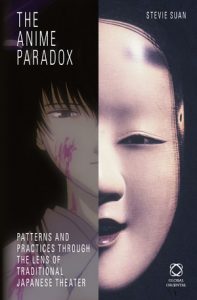
The Anime Paradox: Patterns and Practices through the Lens of Traditional Japanese Theater is an examination of the form of Anime—the repeated visual, aural, and narrative conventions performed in Anime texts—exposed through a comparison with the viewing modes and formal conventions of Asian theaters, primarily Noh, Bunraku, and Kabuki. This is not to push for a “cultural” reading of Anime, to construct a “Japanese” lineage between Anime and Japanese traditional theater. Rather, it is an attempt to consider different means of approaching Anime, providing ways yet unexplored of how Anime create meaning in their texts, and how they (consciously and unconsciously) distance themselves from other types of animation, even in Japan (e.g. Sazae-san versus Evangelion), through the repeated performance of Anime’s established conventions. Instead of looking to Manga or film or other mass-produced texts, this project looks to the theater, often overlooked multi-media productions that possess viewing modes and reading styles that can provide alternative methods for readings of Anime. Anime has become a site of various significant discourses (locally and globally), but before we determine what this performance is saying, we need to consider, on a very basic level, how it is saying it and explore various means of examining it; we need to reflect on the means of expression in the performance of the Anime form, often a crucial point of aesthetic attraction itself: Anime sells locally and globally because it exhibits itself as distinctly “Anime.” The Anime Paradox is thus an effort to provide an accessible discussion on Anime form and the mechanics of the type beauty represented through it from the standpoint of a critic and long-time viewer of Anime. This examination through comparison also works in the other direction, further endeavoring to enrich our understanding of theater through Anime.